
At 8:00 p.m. on March 11, the firing of the Genyo Kiln is about to end. The firing of Asahiyaki climbing kiln takes place over three days and nights.
There is an overwhelming silence that is far from dynamic. If you come here with an image of a hectic and dynamic manufacturing site, you will be completely overwhelmed. It seems as if it were a place of ritual, or is it rather solemn? The atmosphere is somewhat different from the way we feel time passes. During the three days, the calm and thoughtful air moved back and forth again and again, like the flickering of a flame, through the dark and mindless spaces of the unknown. Without
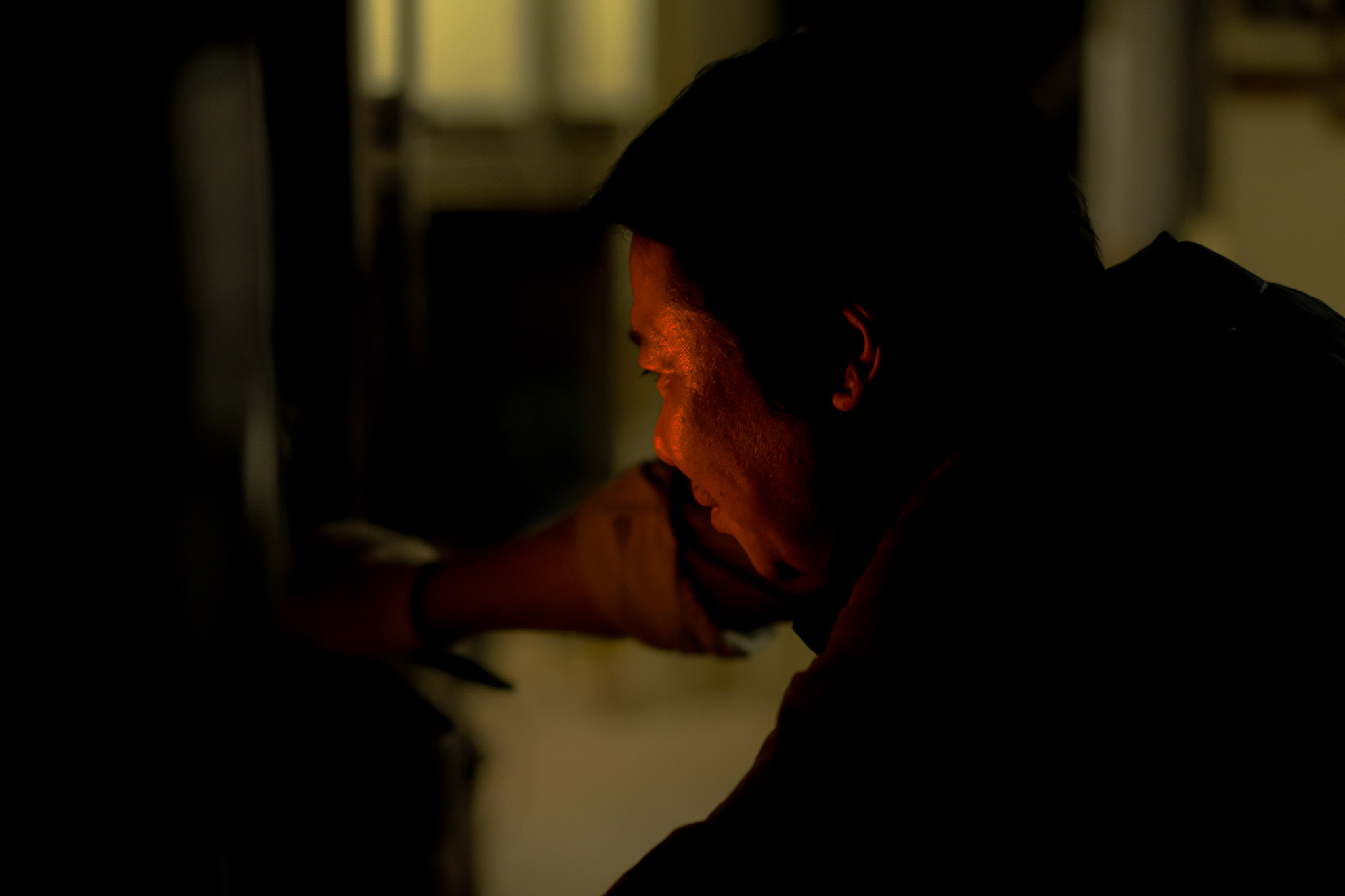
In the dark space of the night, only the glare of the flames seen through the peephole in the kiln stands out. The inside of the kiln is in a special state, reaching temperatures of over 1,400 degrees Celsius at its peak. Under these circumstances, we cannot trust our daily sight and hearing. With only the state of the flame and its temperature to rely on, the craftsman continues to watch patiently.
I was particularly impressed by the calm expression on their faces, as if they were gazing at a bonfire in front of the tremendously burning fire. It seemed as if this peaceful time would go on forever, but suddenly the voice of the 16th Hosai echoed through the kiln site. The artisans take a closer look at the inside of the kiln and begin to place the wood in the places Hosai designated.
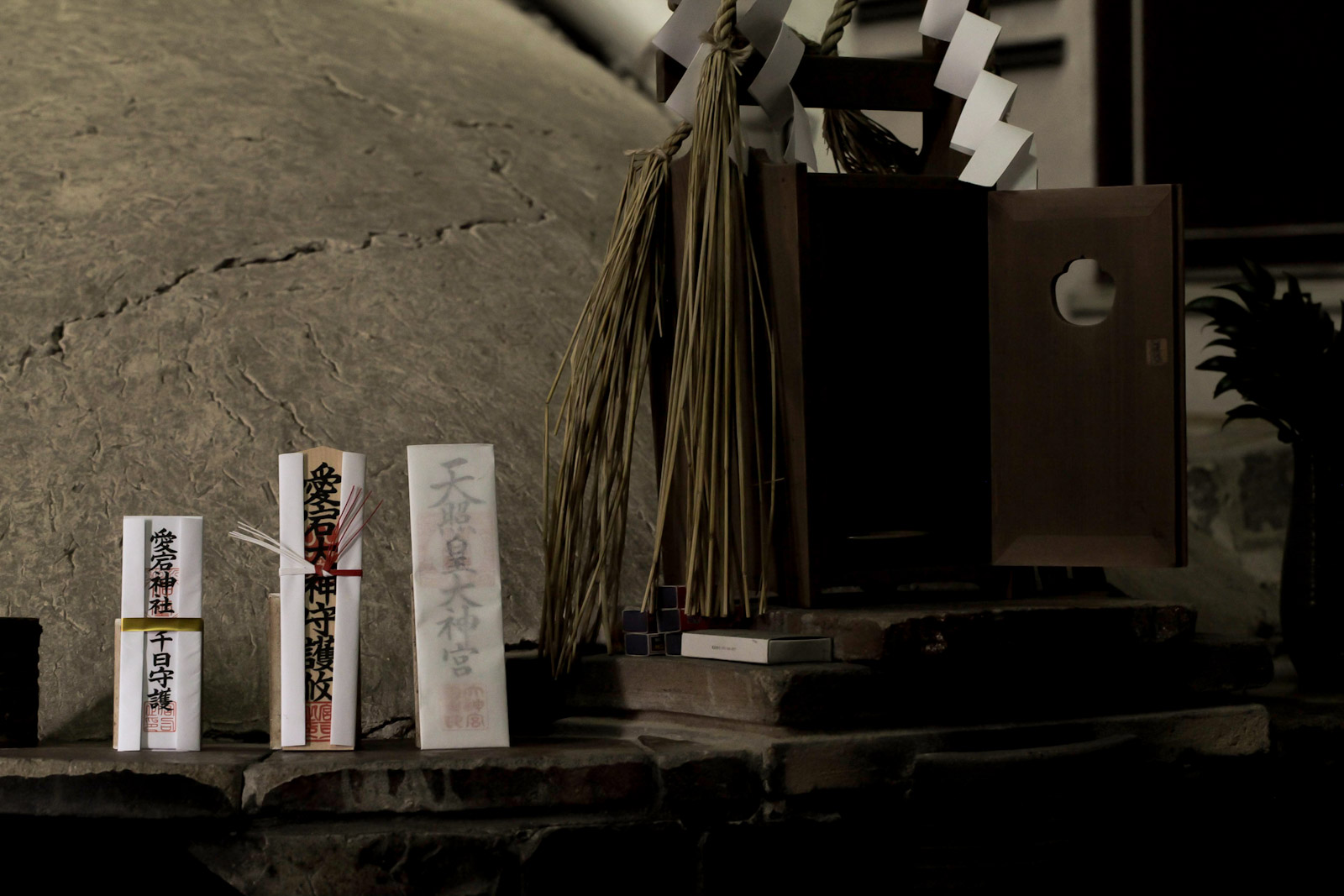
Humans stand in awe of the sheer helplessness of nature's ferocious power before our eyes. This is also evident in the ritual of praying to the local gods before firing the kiln. "It is because we are making something that touches the unknown = God that we pray to the earth, to the fire, and to the land. The true nature of the sanctity of this place. Asahiyaki‘s focus on the primitive and its persistence in craftsmanship seem to have great significance today. It is not just a matter of preserving tradition, but a message about "things" that is more important than that.
From today"s point of view, where industrial, mechanically made things seem to be all there is in this world. This is because these "things" are "heretical," which raises the question of whether they are man-made or God-given natural products.

For 400 years, Asahiyaki has been trying to find a way for humans to be involved in the natural art of making things with clay and fire in Uji.
This is a documentary of the imagination of man and nature over pottery. It is said that even after generations of refining, only about 20% of the total volume of kiln-fired pieces are successfully produced in the kiln. In today"s world of efficiency, there may be nothing more inefficient than this. But what is created from that, no two are alike in this world, and each one has its own story.
The beauty and emotion we feel in our hands is due to the rare combination of human imagination and natural art that can never be created by artificial means, without any sense of boundaries.
At the climbing kiln, the craftsmen, who had been calm for a while, started to get busy again.

Q. What are the difficulties of firing in a climbing kiln?
Kiln firing is the process of firing pottery by using wood as fuel to raise the temperature of the kiln. However, it is not just a matter of putting in a lot of wood and getting to a certain temperature, but the condition of the kiln when it reaches that temperature is a very important point in firing pottery.
The timing to determine the color of the pottery, what the temperature is like in the kiln as melting the glaze process, that we call “the atmosphere of the kiln”. We should decide the amount of firewood to use by feeling the atmosphere, whether there is enough oxygen or not, and always thinking about the best way to control it.

Q. What does control the atmosphere of the kiln actually mean?
Until the temperature exceeds 1,000℃, it doesn't have much effect on the pottery, but the interval up to 1,000℃ is like an adjustment period to see how the temperature changes, that we call “hota-hota”. We will adjust the temperature to be what we envision it to be. Then, we add a lot of wood to create a situation where there is not enough oxygen, and then we reduce wood amounts to supply oxygen to the kiln gradually.That's "like the works sucking up oxygen." In a very vague image, I wondered, "Is it enough? Is it not enough?" , always consciously imagine the inside of the kiln.
The thermometer, the momentum of the fire, the color of the fire and the inside of the kiln, are all things we concentrate on at the time. There is a hole in the kiln the fire blows out, and by the way the fire blows out, I realize whether there is enough oxygen or not. It is difficult to understand the total amount of oxygen even if we measure one point, so it only depends on imagination. The only way to imagine is through experience, and based on it, we assume, "How much is it now? Based on the experience, we can determine the amount and timing of firewood. If it is wrong, of course the result will be worse. It' s a repeated struggle to figure out whether you' re off or not.
However, there are times when the kiln suddenly starts to change into a different aspect, even though the process is going as I imagine it to be. "Although I think, ' This is the situation last time, so it should happen the same way,' it works differently. Naturally, the temperature is different each time, and the items in the kiln are also different. The kiln itself also changes little by little over the years. In this situation, I will develop an image of what is right, and adjust it by adding my experience.
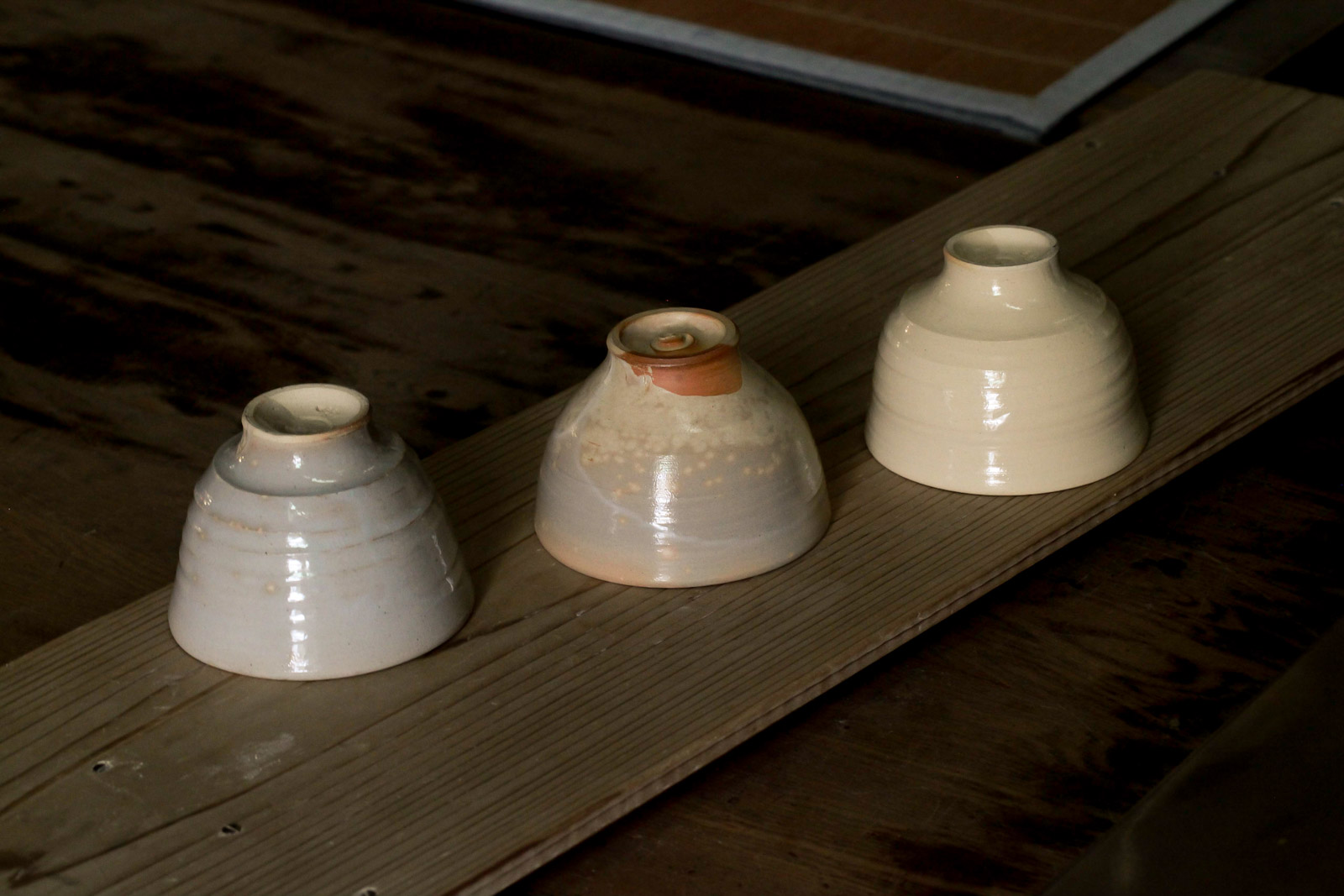
Q. How does the condition of the flame affect the pottery?
In the case of our pottery with the pattern of fawn' s back, which we call "Kase," the pottery turns bright yellow when it is fired with sufficient oxygen. If it is fired with no oxygen supply or not enough, it will turn grey.
It' s quite easy to make it one way or the other, but if the subtlety of the color is pursued, then it is very complex and beautiful, with either khaki or gray with spotted patterns, or both. It' s not one or the other, it' s a subtle point, a very narrow range. This is the most difficult point.
For example, in the case of Kase, about 15-20% of the pottery I fire is good enough to be released to the world as a work of art, and the remaining 80% is not good enough. When the kiln firing is successful, the result is a little more than 20%, and when it fails, the result is sometimes less than 10%.
Even if we succeed, it will only be about 20%, and the remaining 80% will unfortunately have to be discarded. Of course, we may use them ourselves, as we made them with love. However, it is unfortunate to break them off as there are too many pieces. In one kiln firing, I produce about 300 tea bowls and about 400 other pieces, and nearly 1,000 pieces for the Asahi kiln in total. Among them, I can take only about 20% that are especially severe as artworks, and about 50 to 60% are used more daily.
Q. Does more experience mean fewer mistakes?
Of course, as my experience and knowledge increased, I became more confident that " I can!" However, occasionally, just when I feel I' m getting good at it, something unexpected happens, and I am hit with a reprisal that makes me realize that what I thought I understood 100%, is only 20% of what I thought I knew.
Actually, I' m not sure of the result yet, but the room firing right now is in a very confusing situation that I can' t control at all. When I have little experience, "This is how I should control!". but sometimes that works out unexpectedly well. But when that doesn' t work anymore, and there are more and more ways to respond to different situations, it becomes difficult to decide which ones to use. I' m still fearful, or rather thinking about it, and repeating things that work and don' t work, so I' m always trying to keep things fresh.
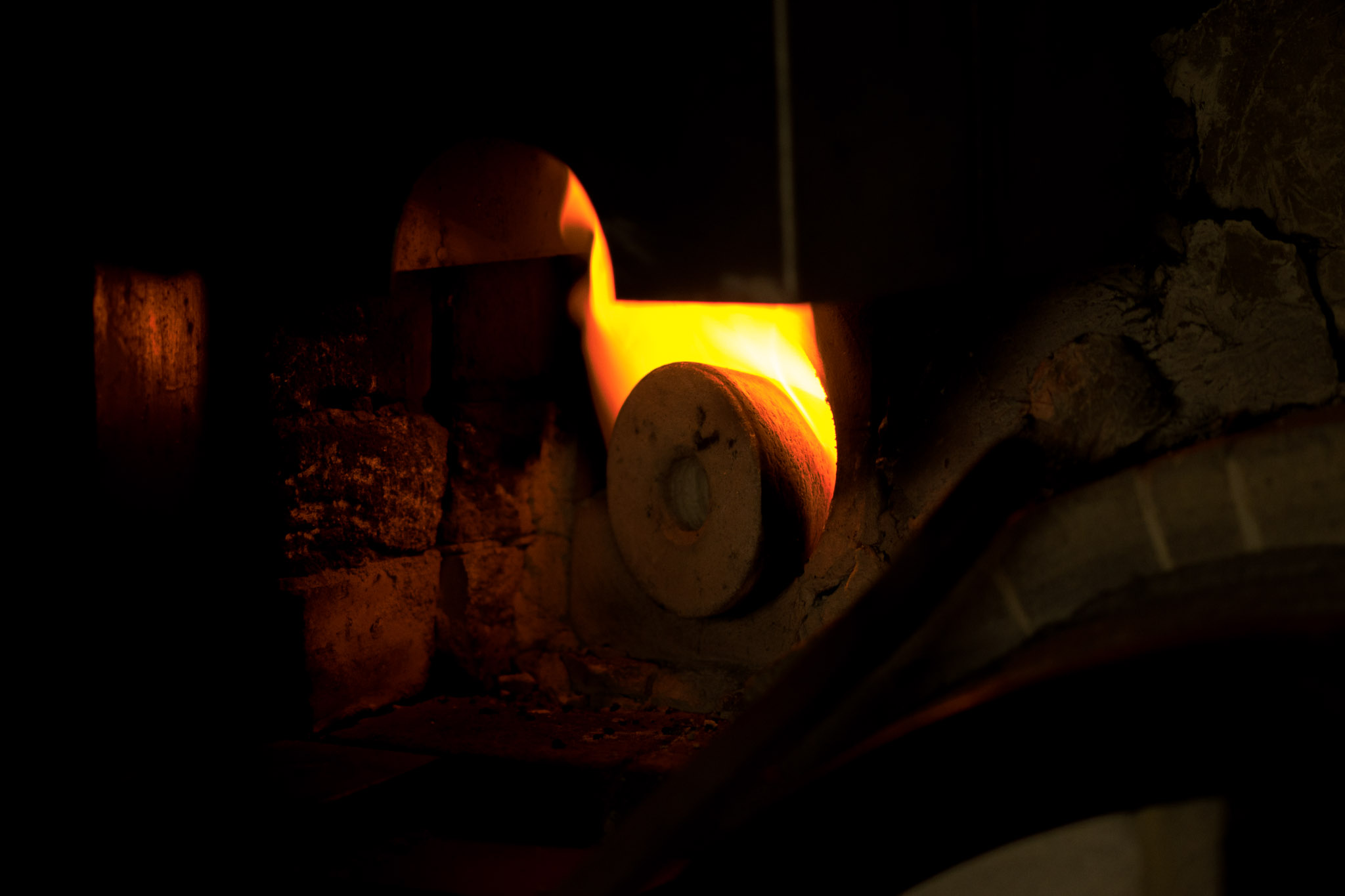
Ana 1
Perhaps the fact that I didn' t add the thin firewood in this firing, the scarlet color was to my taste. Recently, the scarlet color has been quite strong. I' ll try it again without the thin firewood next time.
Ana 2
At the end of Ana 1, the hota-hota situation started with the temperature about 40 ℃ higher in the west.
Adjust well, and an hour later the draft was fully open at 1,066 ℃ east and 1,059 ℃ west.
As I tried to control it, the temperature in the east was lower, and the difference in the west was to the state where the fire was running out faster. Especially in the west side, there were times when the temperature reached a maximum of 1,410 ℃. I think it' s a little too high and I' m worried about the Geppaku glaze in front of the fire.
Unexpectedly, the upper shelf was oxidized, and the glaze melted less, while the lower shelf was reduced and the glaze melted well, but the results were generally good. In the lower section, Benikase was reduced and there were few good pieces, but in the upper section, we got some fine Benikase, and good pieces were taken in both the lower and middle sections. On the back shelf, Geppaku mostly need to be re-fired. It is better not to place Kumidashi teacup (normal glaze and separated black glaze) in front of the fire, as the size will shrink too much and the color will not be good.
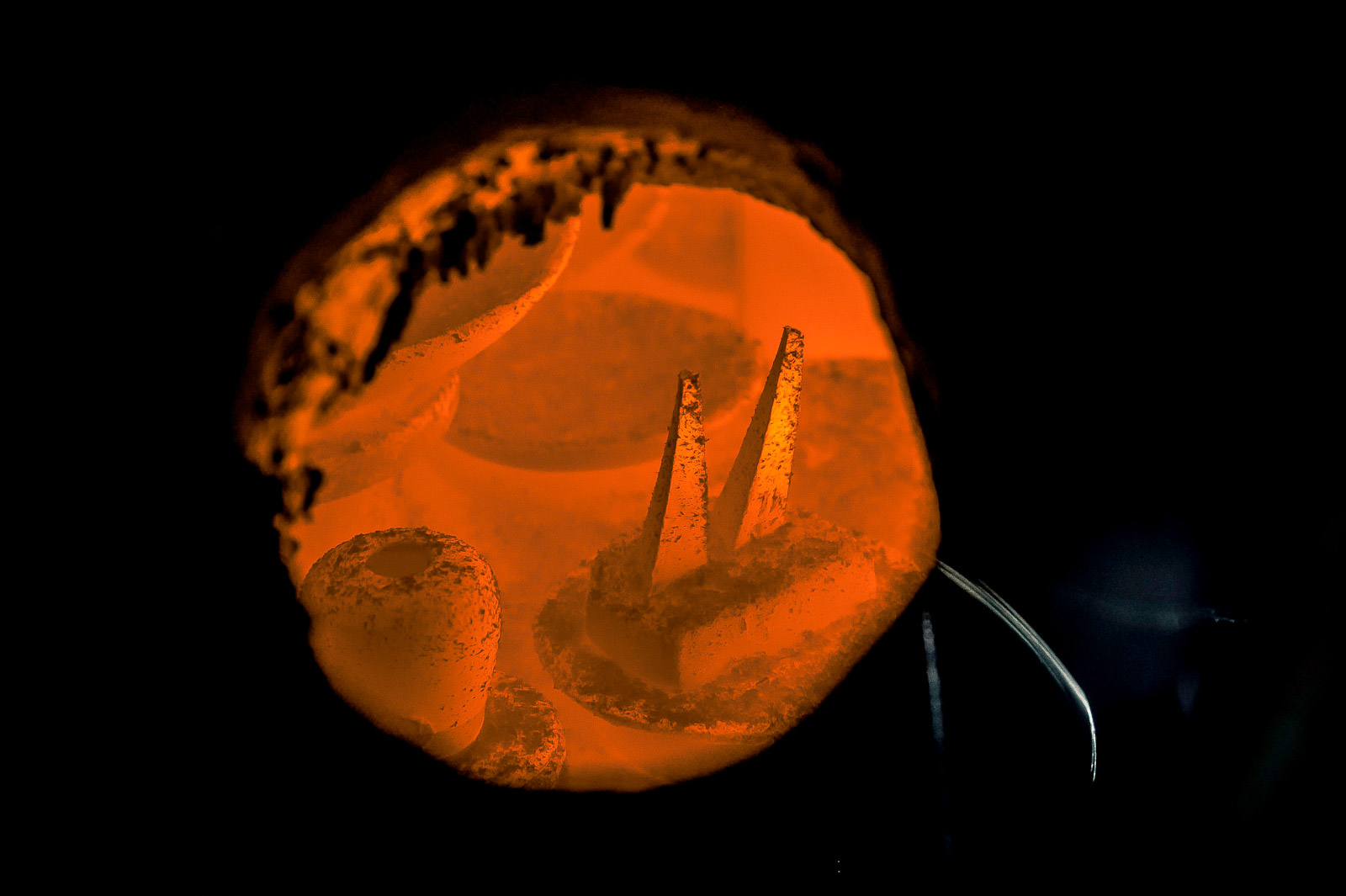
Climbing 1
I had the impression that it was firing rather well from opening all of the draft, but then reducing the number of the split pine logs and letting it oxidize. The fire burned out quite slowly, but the temperature was not increasing, and as I tried to oxidize it, the temperature was decreasing. In addition, the way of blowing from east to west was quite different, and I had to keep searching. I tried to open the "hole 1" and tried other ways, but I was at a loss.
The glaze melting is not good, especially on the west side. I wanted to prevent over-oxidation and avoid returning to reduction halfway through the process, which would result in a subtle color change, so I stopped firing halfway through the process.
As a result, although the odds were not good, several nice tea bowls were fired near the edge of both the east and west sides. It' s not the best, but it' s not a bad result, I think. Even with the roots in front of the fire, the red-lined flower vase is no longer able to withstand the fire.
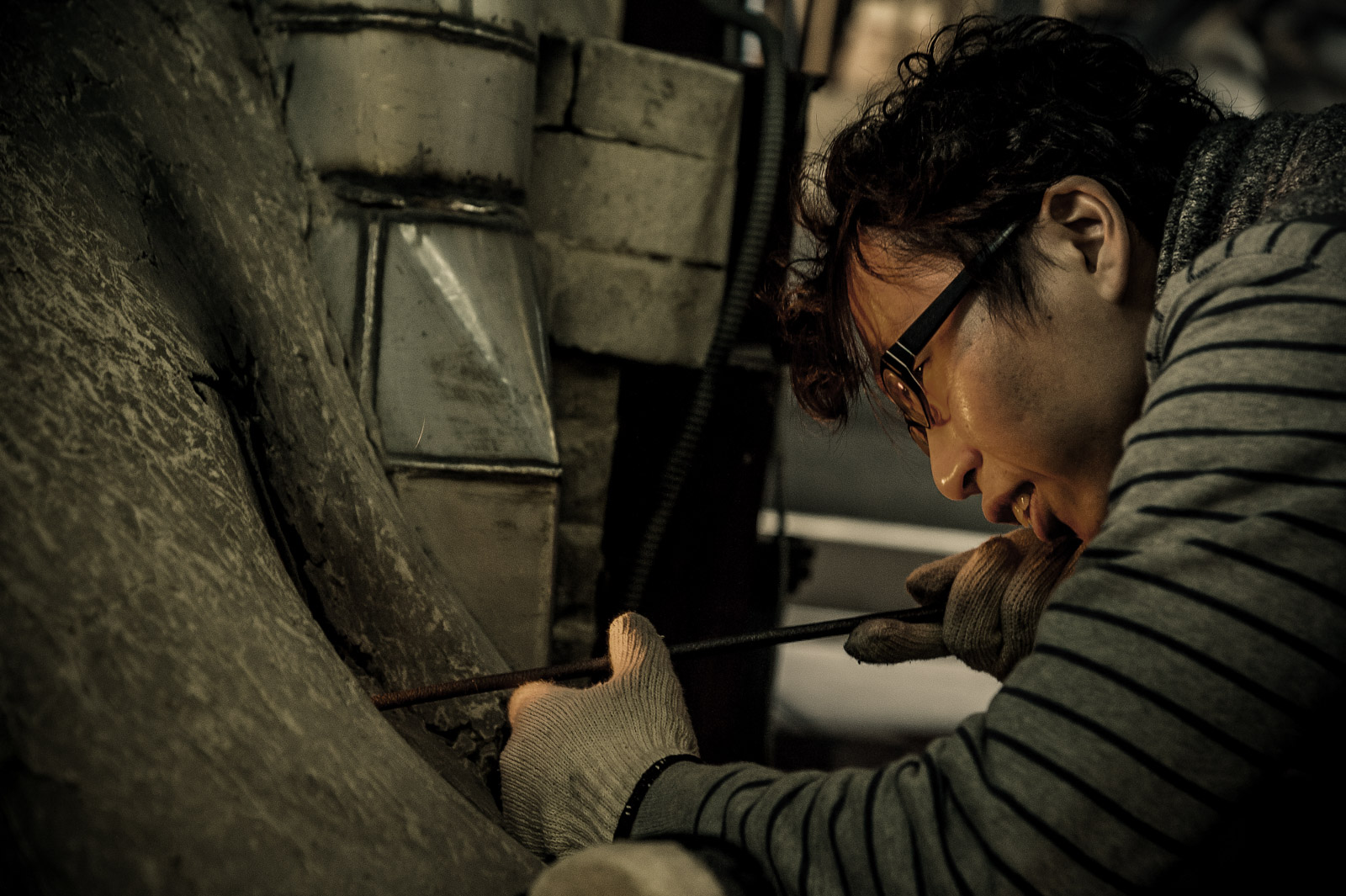
Climbing 2
The last time I fired the climbing kiln (September 2020), " climbing 2" was good, so basically, I will be firing based on that. While applying reduction honestly and firmly, we proceeded until the SK8 in front of the east fire collapsed, and after the SK8 collapsed and oxidized, we proceeded with the utmost care to slowly raise the temperature and toward oxidation without lowering it.
The result was a worst-case situation of almost destruction. We' ve had this situation before, and the reason might be the unevenness of the firewood. We need to check the fire circulation carefully from the fire opening in the second room.
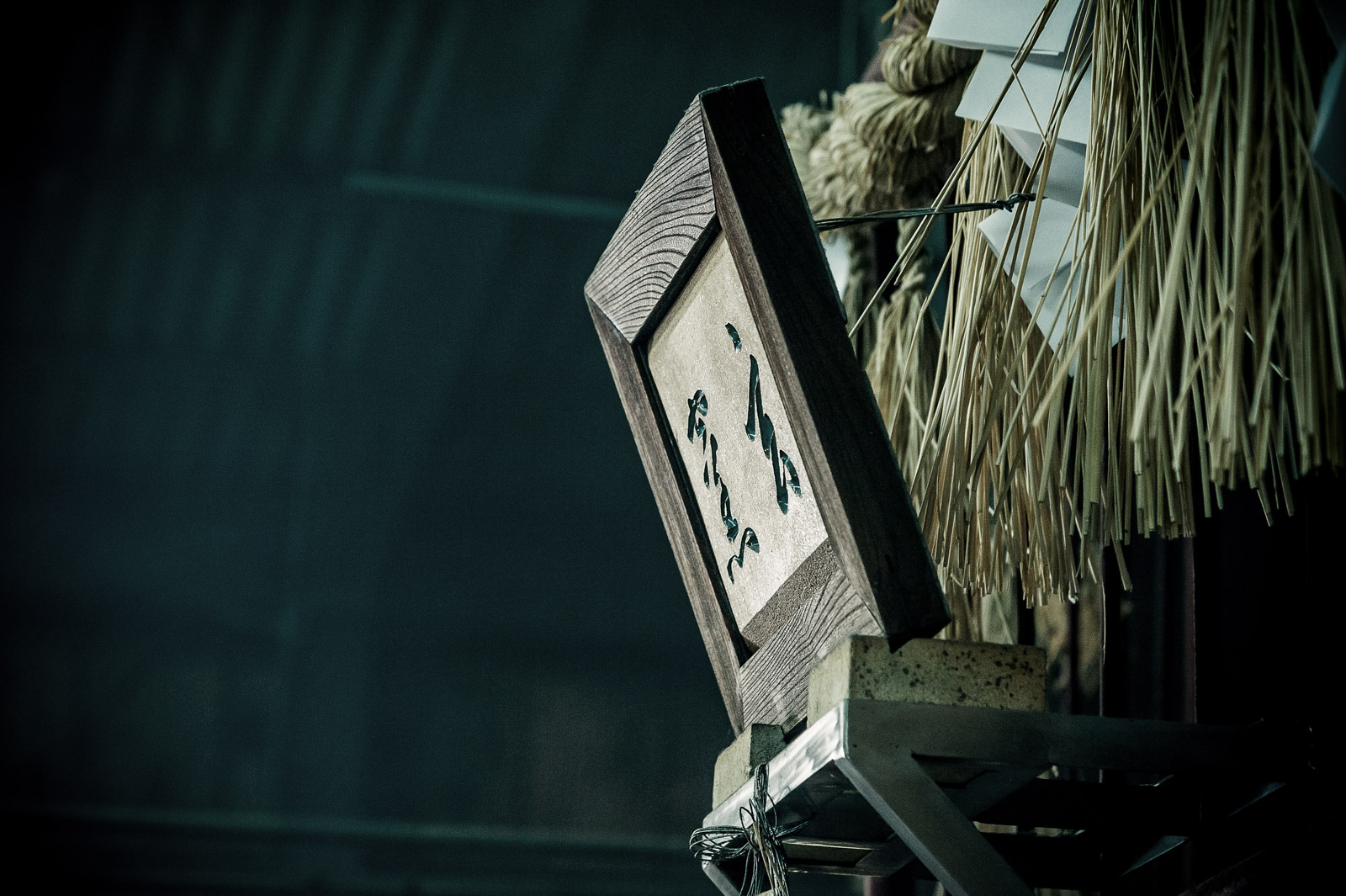
Genyo
The Genyo is smokeless, the combination of climbing and half-underground kilns.
It consists of a climbing kiln part connected to the half-underground part, and the room where the pottery works enter is divided into two half-underground rooms and two climbing kiln rooms, and it is called "Ana 1", " Ana 2", "Climbing 1" and "Climbing 2" respectively, and it fires one room in turn. In a half-underground kiln, the flame is basically in one direction. In a climbing kiln, it rotates widely in the kiln to achieve more efficient firing. In the half-underground and the climbing kiln, the glaze that can be applied is different, and we take the difference into account when firing.
Each room is connected to the other, so the effect of firing is also seen in the connected rooms. One room at a time, but linked together, by the time the first room is finished, the second room has already reached temperatures over 800 ℃ due to heat transmission.
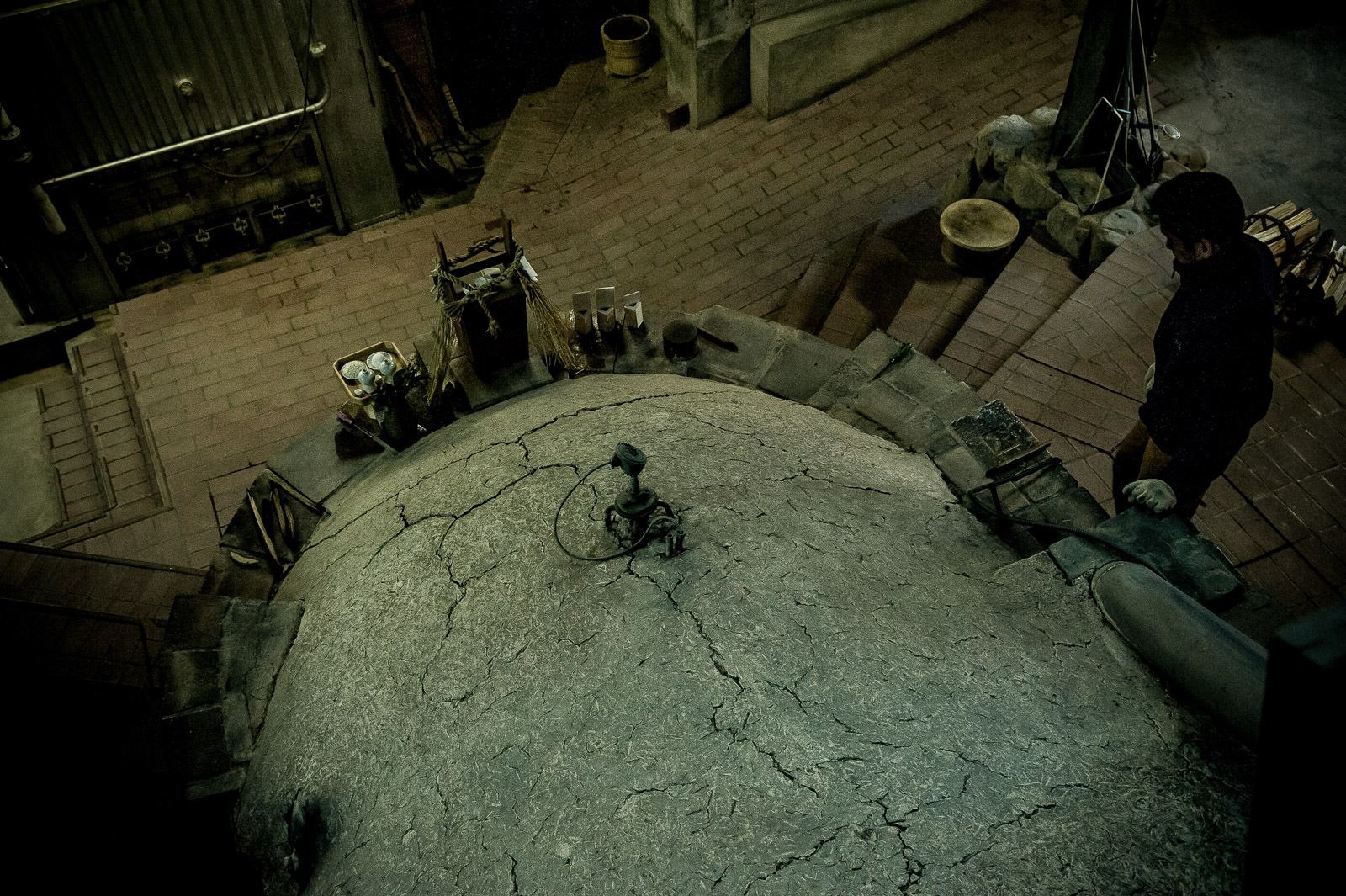
Ana 1
The room called "Ana 1" is the part called the "fire bag", which does not put the works in the case of ordinary Kyoto-style kilns , however the works are placed here in the Genyo kiln. This is the room where the firewood is kept burning throughout the pre-firing process after filling the works in the kiln. This is the place the firing pattern is different from other rooms, and the temperature rises the least. Therefore, it is not suitable for the Kase and Benikase styles, and is fired at a lower temperature (just over 1,300°C) with a strong reduction. The 16th generation places here for firing Kohiki and Kohiki black glazed vases.

Ana 2
The room called "Ana 2" is the largest space in the kiln. After the "Ana 1", the "Anal 2" starts firing after a period of temperature adjustment called "hota-hota". "Ana 2, Climbing 1 and Climbing 2" are basically similar in composition with works such as Geppku glazes with strong reduction in front of the fire. The Kase and Benikase are placed far from the fire. Ana 2 is larger in space, so it can be filled with more pieces suitable for reduction than Climbing 1 and 2. There are two places to put firewood, which is another feature of this room. Geppaku glazed pieces are most likely to be fired beautifully in this room. Firing duration is shorter than in "Ana 1". "It tends to be longer than Climbing 1 and 2, and the texture of Kase and Benikase is sometimes a little more unique than that of the Climbing kiln. Peak temperatures can even reach nearly 1,400°C.
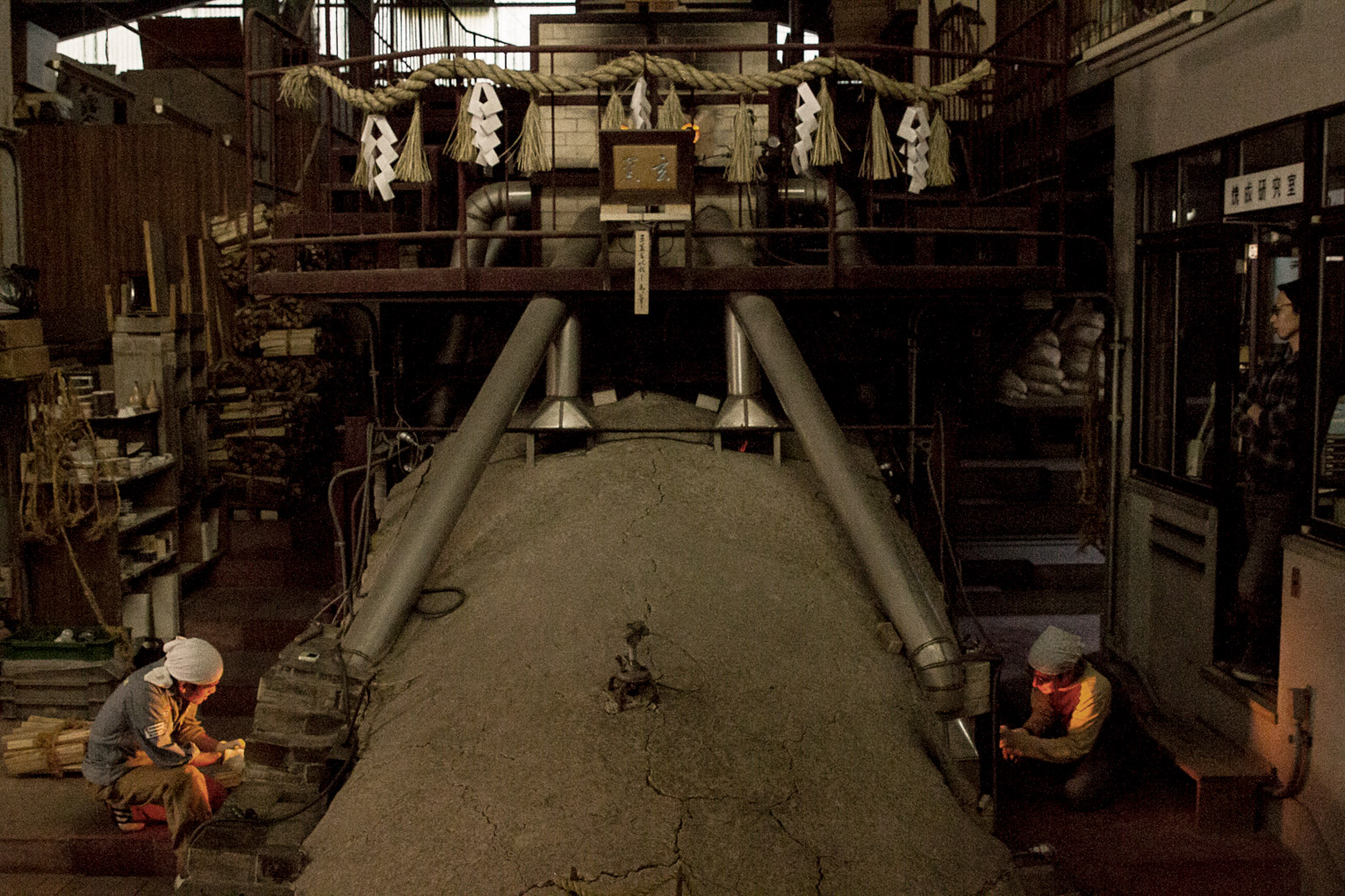
Climbing 1&2
"Unlike the tunnel part, Climbing1 consists of two parts, the firefront and the cart, but the room itself is not large and the temperature of the entire kiln is raised already in the section, so the temperature rises quickly. I should adjust the amount of firewood to allow oxidation and reduction to coexist in a short time. The temperature rises rapidly in front of fire and the glaze tends to melt better. Basically, my priority is to make Kase and Benikase fire beautifully. Same as Ana 2, the temperature is over 1,350°C and sometimes close to 1,400°C.
"Climbing 2 is almost the same as Climbing 1 and the firing method is similar. Although the space is larger, the firing time is the shortest, as it is the last room and the heat from the previous firing is stored. The maximum temperature is about the same as in "Climbing 1".

JPY253,000
Just fired in Genyo Kiln in March, this Kase feels as if it is relaxing, especially in the warm spring light. If I were to give it a name, I would name it “Yoko” or “Spring light”.
Size Φ130×h70 mm
Material Kase (Local Clay)
Glaze Transparent
Firing Genyo (Climbing kiln)
Box Wooden Box
Made to order, approx. 2 weeks